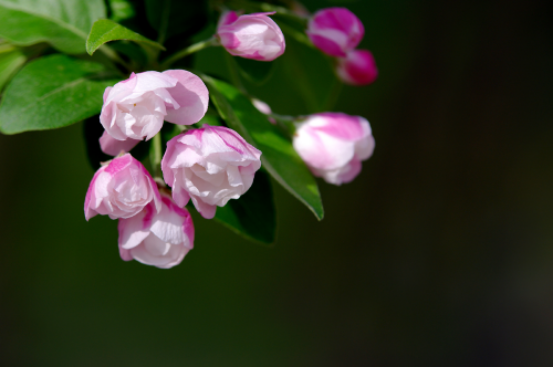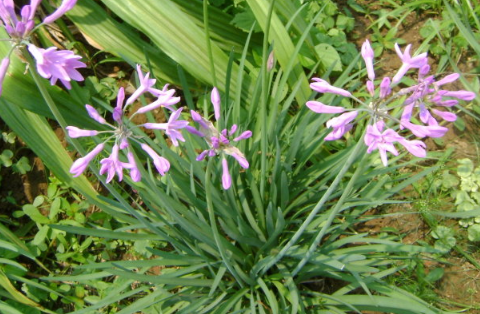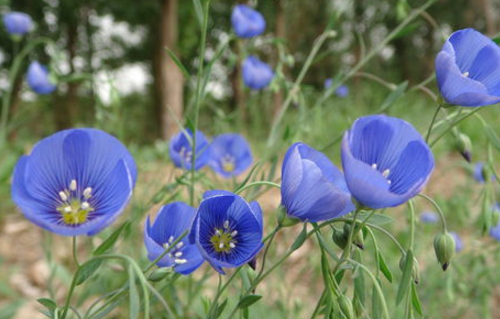The Propagation method of Begonia Xifu
1. Grafting method:
The grafting of Malus sinensis is divided into bud grafting and branch grafting, and the rootstocks are mostly used as seedlings of the same genus. The bud grafting of begonia should be carried out in August and the branch grafting should be carried out in spring.
2. Split-plant method:
The ramets of Tripterygium should be carried out in early spring in March before budding. In some years, small seedlings will sprout around the western crabapple, and the seedlings will be cut off from the mother plant with roots. After watering through the water, the seedlings of Malus sinensis were properly shaded to keep the soil moist, and entered normal management after 15 days.

3. Root-burying method:
In early spring and February, the root of the adult begonia grew about 15 centimeters, buried flat in the soil, covered with 7-8 centimeters of soil and watered thoroughly. After that, the soil was often kept moist, and the following early spring was cut off from the mother and planted separately. Conclusion: Western begonia is less sick, but there are many insect pests, so we should pay attention to prevention and control.
Culture methods of Begonia in Xifu breeding methods of Begonia
Western crabapple, also known as son's mother begonia, is one of the traditional famous flowers in China. Today, we will share with you the culture methods and breeding methods of Western crabapple.
Culture methods of Begonia in Xifu:
1. Planting. Western crabapple is generally planted in many rows, and it is appropriate to sprout in early spring or after defoliation in early winter. Keeping the intact root system of the seedling when coming out of the nursery is the key to survival. Generally speaking, big seedlings should bring soil rope, and small seedlings should stay in the lodging soil according to the situation. After the seedlings are planted, the tending and management should be strengthened and the seedlings should be kept loose and fertile.
2. Trim. A pruning was carried out from the defoliation to the sprouting in early spring to cut off the weak branches, disease and insect branches in order to keep the crown open, ventilated and transparent. In order to promote the vigorous flowering of the plant, the overgrown branches must be cut short to reduce the nutrient consumption of germination. Fruiting branches and rubbing branches need not be pruned. During the growth period, if the heart can be removed in time and the vegetative growth is restricted in the early stage, the effect will be more significant.
3. Watering and fertilizing. In order to make Xifu begonia beautiful in flowers and colors, it should be planted on well-drained, fertile and moist land. The planting time should be carried out early before spring bud germination, and rotten organic fertilizer should be applied before planting. Every autumn, after falling leaves, dig a circular ditch around its rhizosphere, apply mature organic fertilizer, cover the soil and pour through water, it can make the branches flourish and the flowers are beautiful in many colors. Watering at the seedling stage should be diligent to keep the soil moist, but not stagnant water, timely drainage should be needed in the rainy season, and middle roots should be loosened once every 2-3 weeks to facilitate ventilation.
The method of propagation of Begonia sinensis
There are generally three propagation methods of begonia in Xifu: grafting, ramet and root burying. Western begonia cuttings are difficult to survive.
1. Grafting method: the buds and branches of Xifu begonia are grafted, and the rootstocks are mostly used as seedlings of the same genus. The bud grafting of begonia should be carried out in August and the branch grafting should be carried out in spring.
2. The ramet method: the ramet of Malus sinensis is suitable in early spring in March, before sprouting. In some years, small seedlings will sprout around the western crabapple, and the seedlings will be cut off from the mother plant with roots. After watering through the water, the seedlings of Malus sinensis were properly shaded to keep the soil moist, and entered normal management after 15 days.
3. The method of burying roots: from February to March in early spring, the root cut of adult begonia grew about 15 centimeters, buried flat in the soil, covered with 7-8 centimeters of soil, watered thoroughly, and then often kept the soil moist, and then cut off the mother in the early spring of the following year for planting.
For more information on the culture methods of Begonia XIFU 1. Light
Western crabapple likes sunny environment, but can grow outdoors for a long time, and likes places with plenty of sunshine and good ventilation.
two。 Watering
More watering is needed in spring and summer, timely and adequate watering in hot summer, such as lack of water, leaf edge is easy to scorch, gradually reduce watering after autumn cool, and less watering after defoliation in winter to prevent rotting roots. It is a deciduous tree species and should not spray too much water on the branches and leaves.
3. Temperature
Xifu crabapple has no high temperature requirements, the suitable temperature for growth is 10-25 degrees Celsius, heat and cold resistance.
4. Soil
Western begonia is not strict on soil, but it is most suitable for growing in fertile, loose and well-drained sandy soil. The comprehensive management of watering, fertilization and pruning should be combined in the growth process of Begonia.
5. Fertilizer application
Xifu begonia likes fertilizer, which can be applied more appropriately, and attention should be paid to the combined use of nitrogen, phosphorus and potassium. If nitrogen fertilizer is used too much, it is easy to cause the phenomenon of luxuriant branches and leaves and sparse flowering. After flowering in spring, nitrogen fertilizer is mainly applied to promote the growth of branches and leaves. More phosphorus and potassium fertilizers are applied in summer and autumn to facilitate flower bud differentiation and ensure flowers blooming and colorful. Fertilizer can be used as cake fertilizer, human feces and urine, bone meal, chicken dung, fishy water and so on.
6. Pruning
Western begonia has strong germination and fast growth, so we should pay attention to the shaping and pruning of Xifu crabapple. Before sprouting in spring, withered branches, disease and insect branches, thin and weak branches, crossed branches, overlapping branches and overdense branches can be cut off.
- Prev

The Propagation method of Zijiao Flower
Sowing and breeding Zijiao flower sowing is to collect seeds in autumn and store them to sow in spring. After entering autumn, small bulbs can be formed and can be dug out and planted separately. But it takes many years for the seedlings to blossom. Bulb propagation usually grows some small bulbs on the periphery of the stem disk of the old bulb, but the bulbs can be separated from September to October.
- Next

Matters needing attention in breeding of Chrysanthemum morifolium
The common reproduction method of Chrysanthemum morifolium is to sow and reproduce, usually in autumn or in April. Pruning the heart in the growth process of the front chrysanthemum, you need to prune or pick the heart frequently. If you pick the heart before flowering, you can sprout more branches. When picking the heart, pay attention to keep 4-6 leaves.
Related
- Fuxing push coffee new agricultural production and marketing class: lack of small-scale processing plants
- Jujube rice field leisure farm deep ploughing Yilan for five years to create a space for organic food and play
- Nongyu Farm-A trial of organic papaya for brave women with advanced technology
- Four points for attention in the prevention and control of diseases and insect pests of edible fungi
- How to add nutrient solution to Edible Fungi
- Is there any good way to control edible fungus mites?
- Open Inoculation Technology of Edible Fungi
- Is there any clever way to use fertilizer for edible fungus in winter?
- What agents are used to kill the pathogens of edible fungi in the mushroom shed?
- Rapid drying of Edible Fungi

